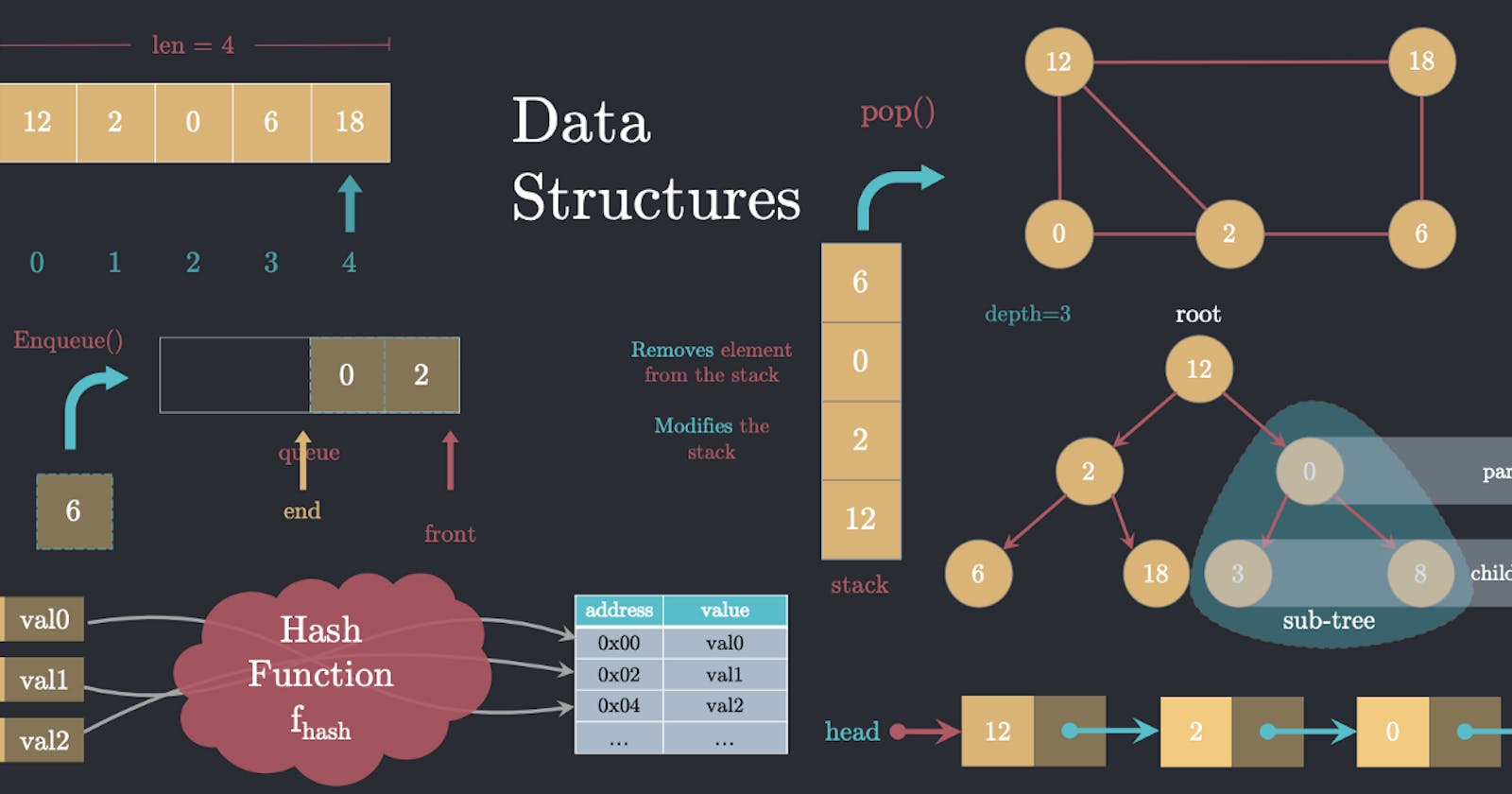Table of contents
No headings in the article.
Are you a developer looking for an edge in your coding journey? Do you want to know more about some of the basic data structures that can be used to write efficient JavaScript code? Look no further! In this blog post, you will learn about the different types of data structures available and the benefits they can provide. But before we dive into the details, let me arm you with the knowledge that will put you ahead of the curve in terms of being able to effectively utilize many data structures.
Type of Data Structures
There are four main types of data structures:
Linear data structures Non-linear data structures Hierarchical data structures Graph data structures
Let's take a closer look at each of these.
Linear Data Structures
A linear data structure is a data structure that is arranged in a linear fashion, meaning that the data is laid out in sequential order. The most common linear data structures are arrays and linked lists.
Arrays
An array is a data structure that contains a group of elements, all of which are of the same data type. The elements in an array are accessed by their index, which is the position of the element in the array. Arrays are static, meaning that the size of the array is fixed and cannot be changed once it is created.
Linked Lists
A linked list is a data structure that consists of a group of nodes, which are connected together in a linear fashion. Unlike arrays, linked lists are not static, meaning that the size of the linked list can be changed as new nodes are added or removed. Linked lists are often used to implement queues, stacks, and other data
Non-Linear Data Structures
A non-linear data structure is a data structure that is not arranged in a linear fashion. The most common non-linear data structures are trees and hash tables.
Trees
A tree is a non-linear data structure that is used to store data in a hierarchical fashion. Trees are made up of nodes, which are connected together by edges. The nodes at the top of the tree are called the root nodes, and the nodes at the bottom of the tree are called the leaf nodes.
Hash Tables
A hash table is a data structure that is used to store data in a key-value format. The keys in a hash table are used to access the values, which are stored in the corresponding location. Hash tables are used to implement dictionaries and other data
Hierarchical Data Structures
A hierarchical data structure is a data structure that is arranged in a hierarchical fashion, meaning that the data is arranged in a tree-like structure. The most common hierarchical data structures are binary trees and binary search trees.
Binary Trees
A binary tree is a hierarchical data structure that is used to store data in a sorted fashion.
Binary trees are made up of nodes, which are connected together by edges. The nodes at the top of the tree are called the root nodes, and the nodes at the bottom of the tree are called the leaf nodes. Binary trees are often used to implement searching and sorting algorithms.
Binary Search Trees
A binary search tree is a hierarchical data structure that is used to store data in a sorted fashion. Binary search trees are made up of nodes, which are connected together by edges. The nodes at the top of the tree are called the root nodes, and the nodes at the bottom of the tree are called the leaf nodes. Binary search trees are often used to implement searching and sorting algorithms.
Graph Data Structures
A graph is a data structure that is used to store data in a linked list format. Graphs are made up of nodes, which are connected together by edges. The nodes in a graph can be linked together in any order.
Conclusion
There are many different types of data structures that can be used to store data in a variety of ways. each type of data structure has its own set of benefits and drawbacks. As a developer, it is important to be aware of the different
types of data structures and how to use them in order to create efficient and effective algorithms. Linear data structures are arranged in a linear fashion, while non-linear data structures are not. Trees and hash tables are two examples of non-linear data structures. Hierarchical data structures are arranged in a tree-like fashion, while graph data structures are linked together in any order. data structures are arranged in a linked list format. data structures are arranged in a linked list format. data structures are linked together in any order. data structures are not.

